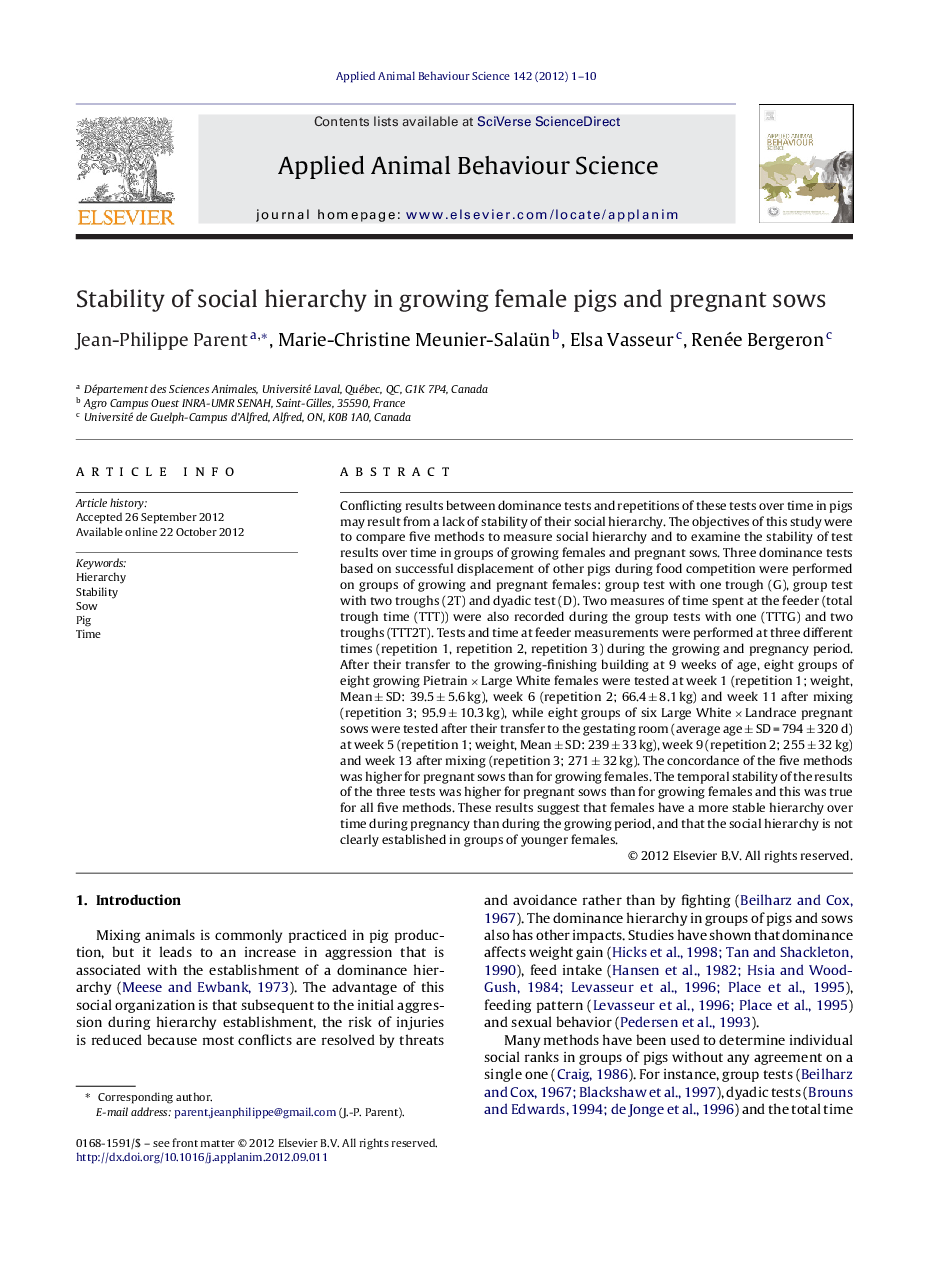| Article ID | Journal | Published Year | Pages | File Type |
|---|---|---|---|---|
| 4522863 | Applied Animal Behaviour Science | 2012 | 10 Pages |
Conflicting results between dominance tests and repetitions of these tests over time in pigs may result from a lack of stability of their social hierarchy. The objectives of this study were to compare five methods to measure social hierarchy and to examine the stability of test results over time in groups of growing females and pregnant sows. Three dominance tests based on successful displacement of other pigs during food competition were performed on groups of growing and pregnant females: group test with one trough (G), group test with two troughs (2T) and dyadic test (D). Two measures of time spent at the feeder (total trough time (TTT)) were also recorded during the group tests with one (TTTG) and two troughs (TTT2T). Tests and time at feeder measurements were performed at three different times (repetition 1, repetition 2, repetition 3) during the growing and pregnancy period. After their transfer to the growing-finishing building at 9 weeks of age, eight groups of eight growing Pietrain × Large White females were tested at week 1 (repetition 1; weight, Mean ± SD: 39.5 ± 5.6 kg), week 6 (repetition 2; 66.4 ± 8.1 kg) and week 11 after mixing (repetition 3; 95.9 ± 10.3 kg), while eight groups of six Large White × Landrace pregnant sows were tested after their transfer to the gestating room (average age ± SD = 794 ± 320 d) at week 5 (repetition 1; weight, Mean ± SD: 239 ± 33 kg), week 9 (repetition 2; 255 ± 32 kg) and week 13 after mixing (repetition 3; 271 ± 32 kg). The concordance of the five methods was higher for pregnant sows than for growing females. The temporal stability of the results of the three tests was higher for pregnant sows than for growing females and this was true for all five methods. These results suggest that females have a more stable hierarchy over time during pregnancy than during the growing period, and that the social hierarchy is not clearly established in groups of younger females.
